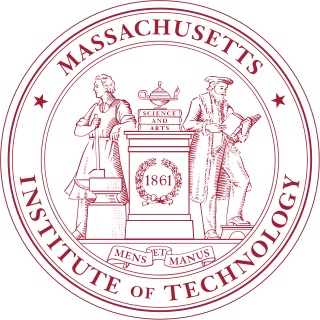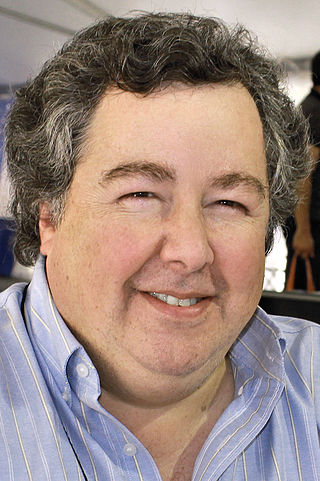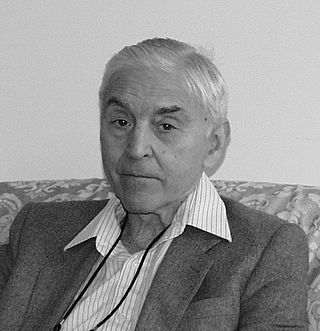Related Research Articles

The Massachusetts Institute of Technology (MIT) is a private research university in Cambridge, Massachusetts, United States. Established in 1861, MIT has played a significant role in the development of many areas of modern technology and science.

Edward Williams Morley was an American scientist known for his precise and accurate measurement of the atomic weight of oxygen, and for the Michelson–Morley experiment.

Eric Allin Cornell is an American physicist who, along with Carl E. Wieman, was able to synthesize the first Bose–Einstein condensate in 1995. For their efforts, Cornell, Wieman, and Wolfgang Ketterle shared the Nobel Prize in Physics in 2001.

Whitney Moore Young Jr. was an American civil rights leader. Trained as a social worker, he spent most of his career working to end employment discrimination in the United States and turning the National Urban League from a relatively passive civil rights organization into one that aggressively worked for equitable access to socioeconomic opportunity for the historically disenfranchised. Young was influential in the United States federal government's War on Poverty in the 1960s.

Deborah Leigh Blum is an American science journalist and the director of the Knight Science Journalism program at the Massachusetts Institute of Technology. She is the author of several books, including The Poisoner's Handbook (2010) and The Poison Squad (2018), and has been a columnist for The New York Times and a blogger, via her blog titled Elemental, for Wired.
Investigative Reporters and Editors, Inc. (IRE) is an American nonprofit organization that focuses on improving the quality of journalism, in particular investigative journalism. Formed in 1975, it presents the IRE Awards and holds conferences and training classes for journalists. Its headquarters is in Columbia, Missouri, at the Missouri School of Journalism. It is the largest and oldest association of investigative journalists in the world.
The California Graduate Institute (CGI) was founded in 1968 as an independent graduate school specializing in psychology, marital and family therapy, and psychoanalysis. CGI and The Chicago School of Professional Psychology formally announced in fall 2008 that they were uniting. The merger was approved by The Chicago School’s accrediting body, the Higher Learning Commission (HLC), in October 2008. HLC joins the Western Association of Schools and Colleges (WASC) as two of six regional associations that accredit public and private schools, colleges, and universities in the United States.
The MIT School of Science is one of the five schools of the Massachusetts Institute of Technology, located in Cambridge, Massachusetts, United States. The School, which consolidated under the leadership of Karl Taylor Compton in 1932, is composed of 6 academic departments who grant SB, SM, and PhD or ScD degrees; as well as a number of affiliated laboratories and centers. As of 2020, the Dean of Science is Professor Nergis Mavalvala. With approximately 275 faculty members, 1100 graduate students, 700 undergraduate majors, 500 postdocs, and 400 research staff, the School is the second largest at MIT. As of 2019, 12 faculty members and 14 alumni of the School have won Nobel Prizes.
The Science in Society Journalism Awards have been presented annually by the American National Association of Science Writers (NASW) since 1972 to recognize "...investigative or interpretive reporting about the sciences and their impact on modern society". Over the years, the particular categories for which they have awarded prizes has evolved, and in their words, they "seek to recognize science writing that is shaped by a variety of perspectives".

Dan Fagin is an American journalist who specializes in environmental science. He won the 2014 Pulitzer Prize for General Nonfiction for his best-selling book Toms River: A Story of Science and Salvation. Toms River also won the Helen Bernstein Book Award for Excellence in Journalism, the National Academies Communication Award, and the Rachel Carson Environment Book Award of the Society of Environmental Journalists, among other literary prizes.

Earl Ubell was an innovative science and health reporter, and editor primarily for the New York Herald Tribune and WCBS-TV from the late 1940s to the 1990s.

Gobind Behari Lal was an Indian-American journalist and independence activist. A relative and close associate of Lala Har Dayal, he joined the Ghadar Party and participated in the Indian independence movement. He arrived the United States on a scholarship to study at the University of California, Berkeley. Later, he worked as a science editor for the Hearst Newspapers. In 1937, he became the first Indian to win the Pulitzer Prize.

Marcia F. Bartusiak is an author, journalist, and Professor of the Practice Emeritus of the Graduate Program in Science Writing at the Massachusetts Institute of Technology. Trained in both communications and physics, she writes about the fields of astronomy and physics. Bartusiak has been published in National Geographic, Discover, Astronomy, Sky & Telescope, Science, Popular Science, World Book Encyclopedia, Smithsonian, and MIT Technology Review. The author of seven books, she is also a columnist for Natural History magazine.
Rediet Abebe is an Ethiopian computer scientist working in algorithms and artificial intelligence. She is an assistant professor of computer science at the University of California, Berkeley. Previously, she was a Junior Fellow at the Harvard Society of Fellows.
The Open Notebook(TON) is a science journalism non-profit organization, online magazine, and publisher. Its purpose is to help science journalists improve their skills. It publishes articles and interviews on the craft of science writing and maintains a database of successful pitch letters to editors. TON also runs a paid fellowship program for early-career science journalists. The Open Notebook is supported by foundation grants and individual donations, and also partners with journalism and science communication organizations.
Michael Balter is an American science journalist. His writings primarily cover anthropology, archaeology, mental health and sexual harassment in science.

Amy Maxmen is an American science journalist who writes about evolution, medicine, science policy and scientists. She was awarded the Victor Cohn Prize for Excellence in Medical Science Reporting for her coverage of the COVID-19 pandemic, and other awards for her reporting on Ebola and malaria.
Joan May Hollobon, was a Welsh-born Canadian writer and journalist best known for her progressive medical reporting for Globe and Mail. She was made an Officer of the Order of Canada (2019) in recognition of her impact on the relationship between medical professionals and the media.
Rebecca Heisman is an American science writer and author who focuses on ornithology and is based in Walla Walla, Washington. She is the author of the 2023 book Flight Paths: How a Passionate and Quirky Group of Pioneering Scientists Solved the Mystery of Bird Migration.
References
- ↑ "The National Association of Science Writers (NASW)". Scholarships.af. Retrieved 2024-03-05.
- ↑ "MIT will be the hub of the universe for science writers this October". MIT News | Massachusetts Institute of Technology. 2015-09-09. Retrieved 2024-03-05.
- ↑ Marcel Chotkowski LaFollette (1 August 2009). Science on the Air: Popularizers and Personalities on Radio and Early Television. University of Chicago Press. p. 162. ISBN 978-0-226-46695-8 . Retrieved 16 March 2013.
- ↑ "Science Editors Organize; Group Forms Association at Meeting in Cleveland". The New York Times . September 17, 1934.
- 1 2 "Science Writers Organize". The Des Moines Register. 1934-09-29. p. 4. Retrieved 2024-03-07.
- ↑ "Einstein Seems to Upset His Own Relativity Theory". Times Union. 1934-12-28. p. 1. Retrieved 2024-03-06.
- ↑ "Science Writers Honered". Lincoln Nebraska State Journal. 1938-10-22. p. 1. Retrieved 2024-03-06.
- ↑ "About the National Association of Science Writers Inc". www.nasw.org. Retrieved 2024-03-07.
- 1 2 "National Association of Science Writers, Inc. - Call for Entries and Rules". nasw.secure-platform.com. Retrieved 2024-03-07.